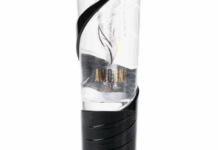Discover Stephan Perdekamp Emotional Method (PEM) origin story, how Stephan and Sarah Victoria built a safe, body-based approach to emotion for actors worldwide.
In the 1990s, European theater was famous for intensity. And infamous for how directors pushed actors past their limits.
Emotional breakdowns were treated like trophies.
Pain was “truth.” And young performers in cities like Berlin, New York, and Chicago were told that suffering was simply part of the craft.
But one director refused to follow that script.
The Perdekamp Emotional Method origin story begins with Stephan Perdekamp, a young artist who looked at the emotional harm around him and said no more.
Instead of breaking actors, he started building a humane, body-based way to train emotion safely. His early experiments caught the attention of Sarah Victoria — a sharp, fearless collaborator who would help turn this idea into a global method reshaping performance culture around the world.

The Starting Point of the Perdekamp Emotional Method PEM Origin Story
Stephan Perdekamp came up during a time when emotional risk was confused with emotional harm. Directors pushed actors to “open the wound” and dig into personal trauma for every role. What he saw felt wrong — brilliant performances built on broken people.
He witnessed actors leave rehearsals shaking, crying, or numb. Some struggled to return to daily reality. Others lost track of boundaries. In the transcript, Sarah recalls that older approaches were so destabilizing that “you can lose the ability to identify reality.”
Stephan didn’t want to be that kind of director.
He didn’t want applause built on someone else’s collapse.
So he did what true innovators do in cities like San Francisco, Manhattan, Los Angeles and Berlin — he questioned everything.
And then he built something new.
Inside the Experimental Lab Where a New Method Was Born
Turning Emotion Into a Physical Skill
The Perdekamp Emotional Method origin story begins quietly — in a small rehearsal room where Stephan ran private experiments with actors. Instead of asking them to remember pain, he studied how the body naturally creates emotion. Breath. Muscle tone. Micro-movements. Nervous-system patterns.
Actors discovered they could reach fear, joy, grief, or aggression without touching old wounds.
It was relatable in the best way: like discovering an emotional “switchboard” you didn’t know you had. And yes — some early exercises looked funny from the outside. Watching actors practice fear runs would make even a Berliner at 4 a.m. crack a smile.
But what mattered was this:
intensity no longer required self-harm.
For performers used to high-pressure environments — think LA pilot season, Broadway rehearsals in Manhattan, or back-to-back shows in Vegas — this approach felt like oxygen.
It also made space for a more fun-loving rehearsal culture. Actors could dive into emotional storms, reset instantly, and then enjoy real life — dinner in Aspen, cocktails in Miami Beach, noodles in Hong Kong — without carrying the character home.

The Arrival of Sarah Victoria: The Missing Piece
A Collaboration That Changed Everything
When Sarah Victoria stepped into the lab, the method sharpened fast. She brought precision, courage, and a willingness to try every experiment Stephan could imagine. More importantly, she had lived through unsafe training and instantly recognized the value of his approach.
Together, Stephan and Sarah tested:
-
emotional triggers through physical cues
-
how breath changes alter the nervous system
-
how to release intense emotion cleanly
-
how to protect actors from psychological overload
If something didn’t feel safe, they rebuilt it.
If something wasn’t repeatable, they rewrote it.
If something risked harm, it was gone.
Sarah’s feedback shaped the entire structure.
Her performances proved the technique’s power.
She helped transform a small German theatre lab into the global force PEM is today.
From a Tiny Studio to a Worldwide Method
A Revolution Built on Safety, Science, and Respect
When directors began observing PEM, they were stunned. Actors showed grief, rage, or love on command — and then snapped back to calm neutrality.
One director watched a grief demonstration and asked, astonished:
“You don’t have to do anything else?”
No trauma.
No emotional hangover.
No cruelty disguised as art.
Word spread fast — across Europe first, then the U.S., then Asia. Today, PEM is taught in major creative cities including Los Angeles, New York, Chicago, Berlin, Hong Kong, Miami Beach, and Atlanta.
Performers love it because it protects them.
Directors love it because it works.
And audiences never know the difference — except that the acting feels even more alive.
It’s a method that respects human beings, supports artistry, and still leaves room for flavor — real food, real joy, real off-hours life.
FAQ Perdekamp Emotional Method (PEM) Origin
Q: What makes the Perdekamp Emotional Method different from traditional acting techniques?
A: PEM uses the body, not personal trauma, to trigger emotions. It’s designed to keep the mind calm while allowing intense emotional expression.
Q: Is PEM safe for beginners?
A: Yes. The method is structured to protect mental health, making it ideal for new actors and seasoned professionals alike.
Q: Can non-actors use PEM?
A: Absolutely. PEM is used in wellness, coaching, and personal development because it teaches emotional regulation through the body.
A Future Where Art Doesn’t Hurt
The Stephan Perdekamp PEM Emotional Method origin story reminds us that better art comes from better care. Stephan and Sarah built a method that lets performers feel deeply without losing themselves — a method shaped not by ego, but by empathy.
In a world where mental health finally matters, PEM offers a new path forward: strong art, safe artists.
Discover Stephan Perdekamp PEM Emotional Method origin story—how Stephan and Sarah built a safe, body-based approach to emotion for actors worldwide.


















![Get Your Indie Movie Made (Responsibly): Jeff Caruso of Wrapbook Leads the AFM 2025 Film Finance Conversation [Exclusive Interview] American Film Market](https://dailyovation.com/wp-content/uploads/2025/11/AmericanFilmMarket2025-1-218x150.jpg)















I’ve learned to ask directors for clarification instead of pushing through confusion
This is incredible. Safety meetings shouldn’t only be for stunts; emotional safety needs attention too.
Yes. A good set is one where every department understands we’re all working toward the same emotional moment
It’s refreshing when emotion is treated as a physical craft, not an excavation of personal trauma
I’d love to see more conversations around repeatability, like delivering the same emotional precision (safely) across multiple takes.
What I appreciate most is when a director creates space for the actor’s process rather than demanding emotional extremes for shock value.
I love that nowadays acting technique includes self-care. Means I can cry, rage, love, and not torture myself
Sounds like actual healthy boundaries